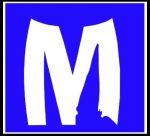Immaginario e territorio

L’immaginario folklorico, come ad esempio le fiabe, tende quasi sempre a localizzarsi: il fatto di cui si parla è avvenuto in quel determinato punto, e si integra totalmente con la località: quando vediamo un ponte del diavolo, ad esempio, non possiamo fare a meno di pensare al racconto come se ci arrivasse insieme all’immagine stessa di quel ponte; la popolazione così tende a pensare che la storia appartenga solo a quel particolare territorio, sia sua e non di altri.
Individuare un’unità territoriale per la presentazione delle storie dell’immaginario è frequentemente una scelta arbitraria, basata normalmente su identità geografiche e/o storiche o semplicemente amministrative. Forse il piccolo paese o villaggio può rappresentare in qualche modo un’unità, nel senso che per ciascuno si ripetono un po’ tutte le tipologie di esperienze e di racconti; prendendo come esempio la Garfagnana, o anche la valle del Serchio notiamo che tutti i paesi hanno il proprio luogo dove si incontravano gli streghi, hanno un qualche personaggio dal nome fantastico che faceva semplicemente paura, hanno case o luoghi dove ci si “risente” o ci si vede, ecc.; il paese-villaggio è una forma di alveo insomma: le storie e le caratteristiche dei personaggi camminano per il mondo, ma in ciascun posto trovano combinazioni diverse, la loro collocazione precisa, unica, irripetibile ed un loro nome.
Le storie quindi viaggiano con gli uomini lungo le strade e nel tempo; per questo organizziamo le testimonianze da vari punti vista.
Possiamo così avere dei viaggi per figure all'interno di determinate aree geografiche e per caratteristiche attraverso collegamenti che possono estendersi sia nello spazio che nel tempo.
Le aree possono essere individuate su base geo-politica o sulla presenza di una determinata figura. Gli streghi, ad esempio, hanno il loro cuore nella valle del Serchio fino a Lucca, nell'area apuana, nella valle dell'Aulella e quindi in parte della Lunigiana: questo è il loro regno.
Interessanti sono anche i percorsi lungo le antiche strade, come la Francigena o la cosiddetta via del Volto Santo per rimanere nel territorio circostante il museo: di anno in anno proporremo varie scelte, che possono essere visionate negli strumenti multimediali qui presenti.
_____________________________
Umberto Bertolini
Folklore and landscape
Almost always, folk stories such as fairytales tend to be locally based: the events spoken about happened in such and such a place, and only there, and are totally integrated with the surroundings: when we see a ‘Devil’s bridge’, for example, the story springs immediately to mind, as if bound up with the very image of the bridge. People thus tend to think of the story as belonging only to that particular place, to them and to nobody else.
Choosing a particular place to represent a folk story is often an arbitrary decision, based on geographical, historical or simply administrative entities factors. Perhaps each small town or village can represent in some way a microcosm, in the sense that each one provides an example of almost every type of experience and story. Taking the Garfagnana as an example, or even the Serchio valley, we can note that more or less every town has its own place where you could meet gli streghi (fairyfolk), each one is likely to have a different fantastically named ‘bogeyman’ character, each one has particular houses or places where you ‘feel’ or ‘see things’, etc. The village or town can be thought of as a funnel; stories and character types wander around in the world, but in each place they occur in different combinations, and find their own precise, unique and unrepeatable setting, and a name of their own.
Stories thus travel with people along the roads and through time. For this reason we have organised our the materials we have gathered from different points of view.
In this way we can follow the journeys of our characters within a given geographical area and connect their characteristics to other times and places.
Areas can be defined on the basis of geo-political entities or by the presence of a particular character. The fairyfolk, for example, have their core territory in the Serchio valley as far as Lucca, in the Apuan Alps, and in the Aullela valley (part of the Lunigiana): this is their kingdom.
In the vicinity of the museum there are also interesting journeys along the ancient pilgrimage routes, like the Via Francigena or the so-called Via del Volto Santo (Way of the Holy Face). From year to year we will suggest various options, that can be visualised using our multimedia installations.
_____________________________
Translation by Linda Barwick, The University of Sydney, Australia
